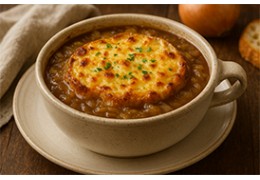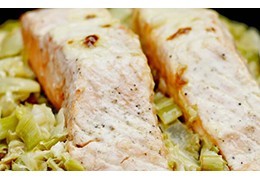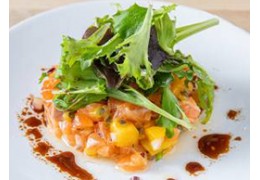What to drink with Mas Jullien wines?
The cuvée Autours de Jonquières du Mas Jullien is made from a complex blend, typically composed of syrah, mourvèdre and carignan, with the occasional touch of cinsault or grenache noir depending on plot and vintage. This wine doesn't seek to demonstrate its power; it seduces with its depth, fine tannins, mineral freshness (inherited from Jurassic limestone and marl soils), and delicious, nuanced aromas. There are notes of ripe black fruit (blackberry, plum), garrigue, fine leather, pepper and tapenade, as well as a mentholated or floral signature that reflects the altitude and geological diversity of the terroirs.
This complexity calls for refined Mediterranean cuisine, where the richness of flavors remains contained by the precision of cooking and seasoning. Thus, a rack of lamb in a herb crust, a duck breast roasted with timut pepper, or a leg of lamb confit with rosemary are all dishes that magnify the structure and intensity of the wine. Traditional dishes from the south of France, such as daube de boeuf à la gardianne, tajine with prunes and sweet spices, or civet de sanglier with black olives, also allow the wine to display its warmest, most Mediterranean notes.
This cuvée from Mas Jullien also pairs well with dishes based on roasted or grilled summer vegetables (eggplant, peppers, tomato confit), spiced up with olive oil, thyme, or tapenade. It also holds up well with mature, hard cheeses, such as Salers, Laguiole, or an aged Cantal, which reveal the wine's tannic tension and uprightness.
.For recent vintages, prolonged aeration (decanting or decanting) is recommended to release all the aromatic potential and soften the tannins. After a few years' cellaring, the aromas evolve towards notes of truffle, blond tobacco and undergrowth, opening the way to more subtle pairings, such as roast quail with figs, beef fillet with wild mushrooms or even a game terrine.
The blanc du Mas Jullien is often considered one of Languedoc's greatest whites. It's the result of an original, local blend of carignan blanc, grenache blanc and gris, clairette, chenin and viognier, depending on the year. What sets this wine apart is its restrained power, its remarkable balance between volume and tension, and its ability to stand the test of time. On the nose, notes of white fruit (pear, quince), citrus (grapefruit, lemon zest), flowers (fennel, chamomile), dried fruit (almond, hazelnut) and sometimes a hint of honey. On the palate, the texture is ample without heaviness, often marked by a noble bitterness, underlying salinity and remarkable length.
This is a gastronomic wine, which excels on precise, textured, sometimes complex dishes. It's the perfect accompaniment to grilled or roasted Mediterranean fish, such as bass, red mullet or St. Pierre, seasoned with olive oil, fennel or citrus zest. A light bouillabaisse, without garlic or chili overload, can also be a first-rate match, as can a poached turbot fillet with celery mousseline and lemon butter. But Mas Jullien's white wine is also well-suited to white meats and poultry, provided that the cooking and sauce respect its subtlety. A supreme of free-range poultry with morel mushrooms, roast veal with sweet herbs, or guinea fowl with citrus fruits are ideal companions. The wine also marries well with sophisticated vegetarian dishes, such as risotto with fennel and saffron, a fine tart with caramelized onions and goat's cheese, or gnocchi with sage butter. It's particularly interesting when paired with certain ripened cheeses with washed rinds or pressed cooked cheeses. An aged Comté, Beaufort or Swiss Gruyère can create a pairing that's creamy, salty and mineral. The white wine then reveals all its complexity in a tight dialogue between texture and aromas.
This white deserves a slightly higher serving temperature than the average southern white: around 12-13°C, or even 14°C if it's a little aged. It also benefits from being decanted young, and can improve for more than ten years, gaining in controlled oxidative complexity, with notes of beeswax, dried fruit and white tea.
This white wine deserves a slightly higher serving temperature than the average southern white.






